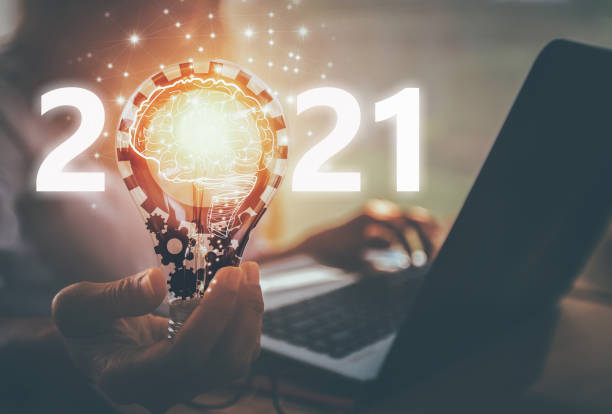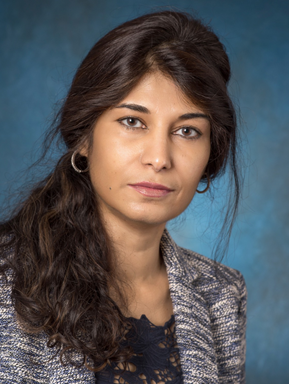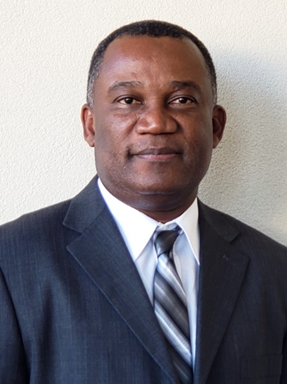7 Experts Cast Their Visions for 5G and Beyond in 2021
 19 January 2021
19 January 2021
Forecasting what might come about over the course of the next 12 months in a space as diverse and dynamic as 5G would be challenging at any given moment. It seems it would have come to prove downright futile ahead of the year in which COVID-19 dominated practically every aspect of life around the globe.
And, yet, looking back on the 5G forecasts of IEEE Future Networks subject-matter experts from January 2020, the “predictions validated fairly well despite COVID-19 emerging as a major socio-economic disruptor less than two months after we published the article,” reflected David Witkowski, Chair, Deployment Working Group, International Network Generations Roadmap, IEEE Future Networks, and Founder and Chief Executive Officer, Oku Solutions LLC.
Added Brian Zahnstecher, Chair, Energy Efficiency Working Group, International Network Generations Roadmap, IEEE Future Networks, and Principal, PowerRox: “If anything, then I feel COVID-19 has greatly accelerated the exponential increase in network traffic/demand even beyond the pre-COVID-19 predictions. This means pretty much all of the concerns expressed for 2020 are that much more salient.”
Again for 2021, we return to experts from across IEEE Future Networks for insights and perspectives on what the year ahead might hold for 5G.
Realization of 5G Value Through Global Pandemic Response
David Witkowski, Chair, Deployment Working Group, International Network Generations Roadmap, IEEE Future Networks, and Founder and CEO, Oku Solutions LLC
Dramatic socio-economic effects from efforts to contain the pandemic and reduce COVID-19 infections have manifested impacts on telecommunications in both positive and negative ways.
Citizens Broadband Radio Service (CBRS)—sometimes called “Private LTE” or “Private 5G”—as an in-building technology will be delayed until people again can start occupying buildings en masse. However, CBRS has proven useful in outdoor deployments for community broadband, and we expect this to continue in 2021.
Work-from-home, distance learning, and a shift to telehealth emerged as tools to contain pandemic spread, resulting in dramatic shifts in cellular voice and data usage patterns. Students without home broadband, or with inadequate home broadband, were given hotspots for school use, but, without good 4G coverage, hotspots are not useful. The increased density of simultaneous users during work/school hours in housing areas placed huge stresses on the 4G network, which resulted in many cities asking carriers and operators to speed up their 4G and 5G deployment efforts, a trend we expect will continue in 2021. In some cases, these users will be served by private networks using CBRS, Wi-Fi, and other unlicensed technologies.
The need for pandemic response tools that minimize human interactions creates an increased need for augmented and/or virtual reality (AR and/or VR) technologies. Likewise, the pandemic drives a need for Industrial Internet of Things (IIoT) (e.g., automation systems that reduce the amount of time a person needs to be in close quarters with other people). Both are enabled by 5G’s ultra-reliable low-latency communication (URLLC) and massive machine-type-communications (MMTC) capabilities, so we predict strong interest in finalizing those in technical standards.
In general, we predict that the value of 5G will be realized not only in smartphone and device connectivity but also in the application of technologies to address challenges we face as the world continues to adapt to the pandemic.
A More Serious Call to Action on Energy-Efficient Optimization
Brian Zahnstecher, Co-chair, Energy Efficiency Working Group, International Network Generations Roadmap, IEEE Future Networks, and Principal, PowerRox
2021 will be the year we stop paying lip service to energy-efficient optimization and start taking it more seriously as a critical call to action because there may be no path forward otherwise. Our Energy Efficiency Working Group (EE WG) has greatly expanded upon the original risk factor of The 5G Energy Gap (5GEG) and generated complementary concepts to help isolate and address related impacts to economics (i.e., The 5G Economic Gap) and even tie to socio-economic factors (i.e., The 5G Equality Gap). More importantly, these concepts have morphed into metrics for assessment and given way to an entire framework for modeling, simulating, and assessing complex chains (also known as “Power Value Chains” or PVC). The key metric of 5G Derate Factor, or 5GDF, is the culmination of all aforementioned factors to simplify into an overall, network metric to be reported and optimized by the framework, which we refer to as the “5G Systems of Systems” (SoS). Any stakeholder can convert their network area of focus PVC into our “universal currency” of energy and chain black boxes together to perform both static and dynamic analyses. The static analysis is necessary to assess a given configuration and identify energy bottlenecks. The dynamic analysis provisions for dynamic optimization of EE for the system as a whole and takes desired operating/financial performance targets to determine a 5GDF and provide recommendations for how to maximize that value for optimal EE performance and, therefore, energy utilization.
Strong Rollout and Penetration of Lower-spectrum 5G Network Globally
Rod Waterhouse, Co-chair, Publications Working Group, IEEE Future Networks, and CTO, Octane Wireless
Obviously, no one in 2019 could have predicted the huge curve ball that COVID-19 would throw in 2020. To the credit of the many people working in 5G technology-related areas, there was still substantial progress made in the 5G sector—albeit probably not as much as one had hoped to see. One impact of the virus was the strong push for the realization of virtual medical care.
So, my predictions for 2021? Really much of the same that I predicted last year (I know this sounds repetitive), with a strong emphasis on the rollout and, therefore, penetration of the lower-spectrum (less than 6 GHz) 5G network throughout the world. I believe the application areas of interests that I mentioned last year are still going to be relevant and intriguing to watch as 2021 unfolds, with the addition of what role high-altitude platforms (HAPs) may play in our future networks. 2021 promises to be an exciting year for 5G.
Expedited 5G Rollout to Support Applications Driven by Pandemic Needs
Ashutosh Dutta, Co-chair, IEEE Future Networks, and Senior Scientist, JHU Applied Physics Laboratory, Chief 5G Strategist and ECE EP Chair
The aftermath of the pandemic will be a key factor in determining a surge in various new types of activities around the world in 2021. These include virtual meetings, virtual conferences, remote education, online shopping, telehealth, and streaming, among others. Hence, there will be development of a series of new emerging applications to support these activities. These activities will result in a surge of both signaling and data traffic in the network. This surge in traffic from billions of end devices will result in a potential security risk for both data in transit and data at rest. In order to support the surge in traffic resulting from these applications, it is important to design networks that are flexible and resilient and will be able to scale out and scale down on demand. At the same time, it is important to have proper security controls in place to detect and mitigate various types of denial-of-service attacks. As a consequence, operators will need to augment their networks with various 5G enablers such as software defined networking (SDN), network function virtualization (NFV), edge cloud, cloud radio access network (RAN), and network slicing. Closed loop automation and orchestration will play a central role to make the network more resilient to support the surge in traffic. Closed loop orchestration in conjunction with security function virtualization and dynamic service chaining will be deployed to take care of denial-of-service type attacks in the network. Artificial intelligence (AI)/machine learning (ML) will play a big role to enable predictive security and stop the zero-day type attacks. AI/ML will also play a crucial role in placement of these control loops in the network. In order to make RAN more scalable and flexible, open RAN solutions will be deployed. There also will be a push toward private 5G networks. Thus, 5G deployment will be expedited across the world in order to support the applications caused by the pandemic.
Pervasive Connectivity Fabrics to Support Transformations Driven by COVID-19
Kaniz Mahdi, founding co-chair, Systems Optimization Working Group, International Network Generations Roadmap, IEEE Future Networks, and Vice President of Advanced Technologies, VMware
- 2020 was anticipated to be a transformational year for telco, with 5G expected to revolutionize the way we live, work, and entertain. It turned out to be transformational, indeed—COVID-19 being the key forcing function. COVID-19 will continue to dominate the scene through the first half of 2021, but behavioral transformations led by COVID-19 are here to stay, e.g., talent reimagined with distributed workforce, school reimagined with customized curriculum, and entertainment re-imagined with home-theatres, drive-in theatres, and e-sports taking a permanent place in our lives.
- We can expect expedited 5G deployments, enabling pervasive connectivity fabrics to underpin sustainable distributed operation of the transformations led by COVID-19 and previously outlined.
- We can expect the rise of edge computing driven by the behavioral transformations drastically reshaping consumer traffic patterns, as well as a high degree of process automation required to sustain such operations, resulting in “elephant flows” too costly to carry over long-haul networks.
- Extended reality (XR)—AR/VR/mixed reality (MR)—finally will become mainstream, as an essential user interface (UI) tool to enhance user experiences driven by sustainable COVID-19 transformations.
- AI will continue to dominate the research scene, with larger emphasis on brain machine interfaces, another manifestation of sustainable COVID-19 transformations.
- Bots everywhere—from consumer homes to manufacturing plants to shopping malls to healthcare facilities.
- Cloud providers will continue to extend their private backbones, capturing the bulk of the traffic shares getting closer to the user (e.g., Google Stadia).
- We can expect the advent of non-terrestrial networks (low-orbit satellite systems such as SpaceX Starlink) initially to bridge the digital divide, as well as continued tech advancements toward adoption with the autonomous-vehicle industry.
Cell-free Massive MIMO as Research Focus and Major System Architecture Change
Webert Montlouis, Co-chair, Massive MIMO Working Group, International Network Generations Roadmap, IEEE Future Networks, and Chief Scientist, Applied Physics Lab, Faculty, ECE, Johns Hopkins University
Cell-free massive massive-input, massive-output (MIMO) will see a lot of activities in the research community. The cell-free massive MIMO architecture will bring new ideas and ultimately drive innovation in other parts of the system, which will have significant importance for 5G and beyond. Although the approach can be seen as user-centric, it is expected to bring considerable improvements to the wireless network infrastructure. This architecture will be a driving force to meet the needs of the IoT in years to come. The cell-free concept will evolve into a major system architecture change that will drive a system partitioning and ultimately affect the edge and cloud computing. Some of the key areas will be:
- Spectral efficiency.
- Beamforming.
- Power-optimization techniques.
- Resource allocation.
- System partitioning in a cell-free massive MIMO architecture.
- Edge-computing architecture and cell-free massive MIMO.
- Cloud computing and cell-free massive MIMO.
- Load balancing to achieve energy efficiency and maintain latency requirements as the number of antenna elements increases.
Boundary-breaking Dialogue Among Electromagnetic-Spectrum Stakeholders
Alexander Wyglinski, Co-chair, Community Development Working Group, IEEE Future Networks, and Professor of Electrical Engineering and Robotics Engineering, Electrical & Computer Engineering, Worcester Polytechnic Institute
- During the next 12 months, expect some exciting and important dialogue between two major electromagnetic-spectrum stakeholders who do not normally communicate with each other: the emerging wireless-technologies community (e.g., 5G/6G and Wi-Fi 6) and the radio-science community (e.g., radio astronomy, GEO remote sensing, and radar). With the spectrum landscape experiencing significant flux—and as new wireless technologies progressively utilize frequency bands located close to spectrum allocated to radio science applications—these discussions are a necessity, in order to mitigate radio frequency interference (RFI) and enable sustainable spectral coexistence.
- The COVID-19 pandemic has significantly accelerated society’s move to an online format, including education, healthcare, and employment. This online way of life requires reliable broadband connectivity, and this pandemic has exposed the large digital divide that currently exists around the world between those who possess enough bandwidth to support their needs and those communities who are underserved or unserved. What we will see in 2021 is a significant effort across government, industry, and academia to bridge that digital divide, by developing broadband connectivity solutions that can reach these underserved/unserved communities, which are mostly located in rural areas with limited network infrastructure. Although part of this effort will focus on rolling out fiber to these communities, there also is an exciting opportunity to employ 5G technology tailored to the specific operating environment to achieve reliable broadband connectivity. However, bridging the digital divide cannot be achieved solely with technology. It also will require the help of other stakeholders, such as utility companies, community leaders, politicians and regional government, and economists. This is very much an interdisciplinary problem, but 5G technology is a game changer.
- 5G security and privacy will continue to be a major topic for the communications sector in 2021. Given how quickly 5G is being rolled out and assuming an ever-important role in supporting our society’s information needs, there is growing concern these very complex networks continue to be vulnerable to cyberattacks. We will see large-scale investment in activities related to securing the 5G network from threats introduced via a compromised supply chain, as well as the incorporation of untrusted hardware into the 5G infrastructure. Additionally, as 5G technology gets blended into the existing telecommunications infrastructure consisting of 4G and 3G cellular networks, the intersections where these technologies meet will be prime targets of attackers. Although the identification of these vulnerabilities can really be performed using actual 5G hardware, 2021 is experiencing significant activity in the construction of realistic 5G testbeds to examine this technology more closely, understand its behavior, determine threats, and provide a basis for the development of solutions to harden this increasingly vital infrastructure.
IEEE Future Networks invites participants in all aspects of current and future connectivity globally into collaboration on enabling the historic transformation promised by 5G and beyond for the benefit of all. Learn more about IEEE Future Networks.

